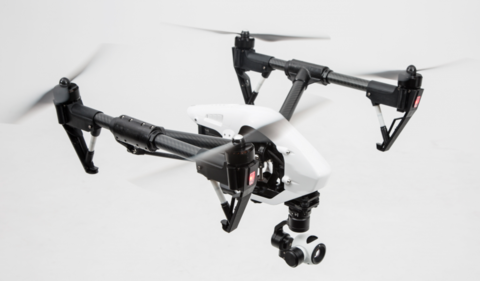DJI Inspire 1 iOS App
DJI Inspire 1 iOS App
When you buy the new DJI Inspire 1, you get the drone and the controller and hopefully you already have a mobile device to attach to the controller. Now all you need is the free iOS app. This app is specifically for Apple devices and it was released in the middle of March this year—so it’s pretty new. If you have an Android, there is also an Android app available. Not only can you use all of these app features with your Inspire 1, you can also connect the app to a DJI Phantom 3 Advanced or Professional drone (as long as the firmware is version 1.1.6).
Here are a few things you can do through the iOS app:
1. You can get all the flight parameters right on your screen and customize all your flight settings. It will show info about the battery, location, speed, and anything else you need to know about how your Inspire is operating.
2. You can view your drone’s flight in live HD and view a dynamic map. The map works with the GPS to help you see exactly where you drone is flying which is especially useful if your drone gets pretty far away. Viewing your drone’s flight in live HD means that you get to see everything your camera sees. So, if you fly your drone over a river and a few fish start jumping out of the stream, you can see that immediately and hopefully catch a shot of it before they stop.
3. Any of these great photo and video shots can be captured remotely. You have full control of the gimbal from the app and can manually change the camera settings while the Inspire 1 is in the air.
4. You can record your flight in real time and even stream it live on YouTube. So if your great-aunt wants to view your outdoor drone adventures when you do, she can.
5. Edit your video. This is very useful since you don’t have to go to another source to start editing your video—you can do it straight through the app.
6. The app even has a flight simulator that is extremely realistic. It is remarkably accurate to how the Inspire 1 responds to your command in real life. This is great for when you want to practice new maneuvers without the risk of accidentally damaging your drone. The flight simulator even has a little tutorial box that will guide you through your flight
7. Help guides and video tutorials are also available on the app so if you have any questions or troubles, you can easily find the answer.
To download the app, just go to the DJI website and, once you’re on the Inspire 1 page, then go to the downloads tab. There will be a link to download the app from there through iTunes. When you have the app downloaded onto your device, connect the device to your controller with the USB cord.

The iOS app for the Inspire 1 is easy to use and will greatly enhance your flying experience.
SOURCE: Drones Etc. – News – Read entire story here.













